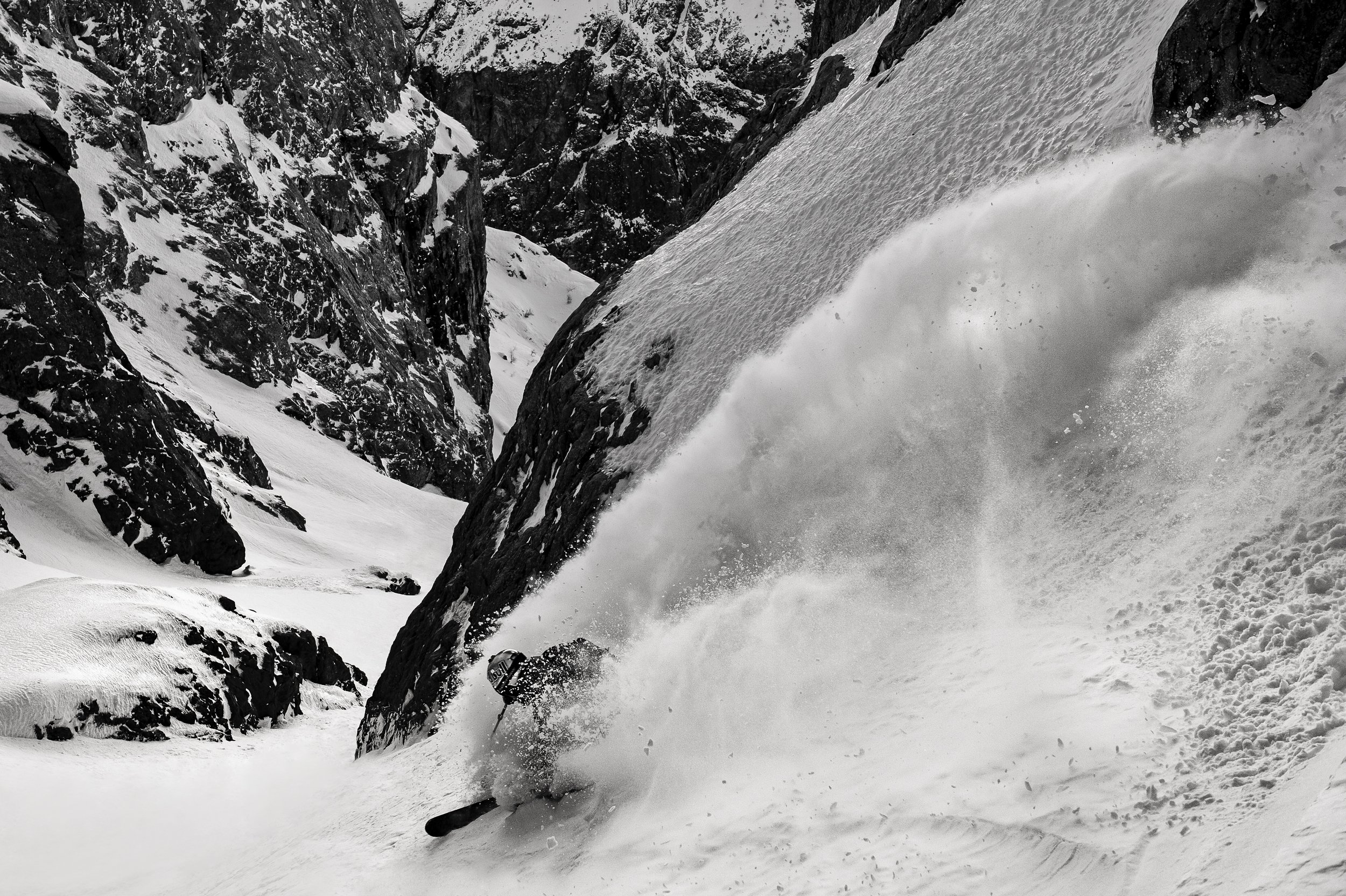
Certifications
AMGA/IFMGA:
Ski • Alpine • Rock
General Profile
Dedicated to the “whole-hearted” pursuit of alpinism, Vince Anderson splits his time between guiding, rocking out to heavy metal, and “mind-expanding” climbing experiences. Vince is a legend in the climbing world. He has climbed the Rupal Face of Nanga Parbat and made the first ascent of routes on both K7 West in Pakistan and the North Face of Mount Alberta. He dreams of climbing the West Face of K2 in alpine style.
Career Highlights:
Ascent of the Central Pillar of the Rupal Face (M5 X 5.9 WI4), Nanga Parbat, Pakistan (winner of 2005 Piolet d’Or Award)
First ascent of K7 West, Karakorum, Pakistan
First ascent of Direct West Face, Makalu II, Nepal
First ascent of House-Anderson (WI5+ M8 R/X) on the North Face of Mount Alberta, Canada in winter
AMGA team instructor, all disciplines; expert mountain biker; husband and father of three young budding athletes
Contact Info
email: climb@skywardmountaineering.com
Instagram: @icevince
Q & A with Vince Anderson*
AMGA: You grew up in the mountains and started climbing at an early age. How did that recreational pursuit evolve into a professional one?
Vince Anderson: My initial attraction to becoming a guide was simply to find a full-time way to enable my climbing and skiing habit. When I was four or so, my parents took me up the Devil’s Head mountain on the Front Range. On top, there is a fire lookout that you can hike up to and go inside. On the way up I asked, “Who lives there?” My parents replied, “The Mountain Man.” My mother kept a children’s journal for me. Where it asked, ‘What do you want to be when you grow up?’ I wrote down, “The Mountain Man.” So I guess I’ve wanted a career in the mountains for quite some time.
AMGA: You’re a very accomplished guide as well as an elite climber. How do these two pursuits support or conflict with each other?
VA: The better a climber one is, the better one is prepared for many (though, certainly not all) of the technical challenges involved in guiding: you move efficiently and smoothly and can ‘stay within yourself’ when working. By that, I mean the types of routes you’re likely to guide will be well within your abilities. You can focus more of your energy and attention on guiding-specific details like your client’s comfort and well-being. It is, however, difficult to dedicate the time necessary to being a full-fledged professional climber when guiding a lot. You end up tired from work and cannot do as much focused training. You can, though, use guiding for low-end, longer, aerobic-type workouts, and factor that into your training plans.
Of course in my opinion, the body is rarely the weak link for people training for alpinism; the mind is. Guiding can offer a lot of opportunity to expand your mental muscular threshold. You can go into environments you are less familiar with and where you have to make decisions on your own regarding the safety of and success and failure of the outing. Unlike climbing with an equal partner, your clients usually cannot help you with these decisions, so you’re forced to think hard about them.
AMGA: Tell me about the history of Skyward Mountaineering—what inspired you and Steve House to start the company, and how do you see it growing?
VA: Early in my guiding career (the mid 90’s), I wanted to get better at ice climbing. At the time Ouray seemed to be the place to go, so I went there. I knew there was some guiding opportunities, but not many. I had a hard time getting work with local guide services; there just wasn’t that much regular guiding work. So I decided to start my own service, market it, and see if I could get business on my own. I never started out wanting to create the next big thing. I just wanted to offer personalized, custom climbing and skiing outings to people. To a large extent, that’s what I’m still doing. Most trips are custom, and the majority of my client base are repeat customers whom I’ve developed a relationship with over time.
AMGA: What kind of experience to you offer your clients? What do you hope they’ll get out of a trip?
VA: I strive to personalize their experience to meet their needs and desires. I know that most people come to climbing through a desire for adventure. They’re hiring a guide for many reasons, often because they want somebody else making the important decisions or are unable or unwilling to lead securely. I like to get a sense of how they feel and perform and push them a little sometimes—sometimes more than a little—out of their comfort zone to a place of vulnerability. It’s a delicate game, though. I find with judicious attention to the individual and their stress indicators, you can do this in a way that lets them grow tremendously from the experience and come away with a true sense of what I think alpinism is all about: adventure/risk, trust, partnership and respect. I want them to feel as if they’ve shared the rope with me as a real partner, as well as feel rewarded by the challenges of a climb.
AMGA: What do you see as your niche in the guiding industry?
VA: It has been and still is predominantly custom trips to alpine classics for individual clients.
*excerpted from the American Mountain Guides Association’s quarterly Guide Bulletin, Summer 2013



